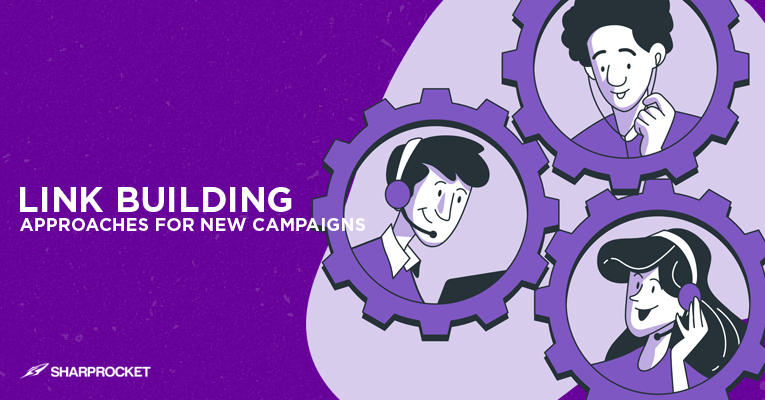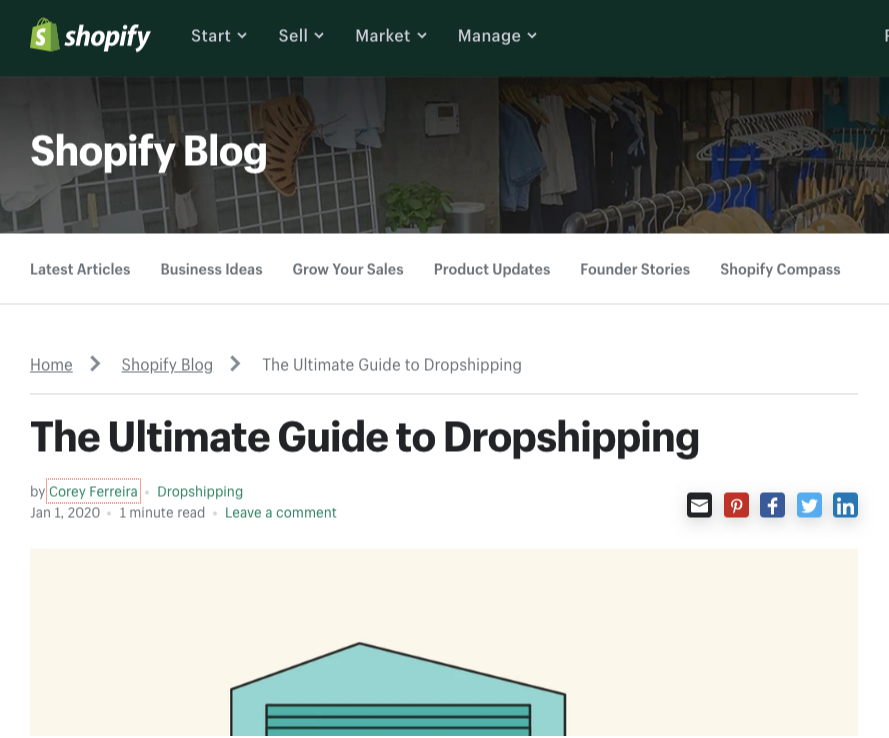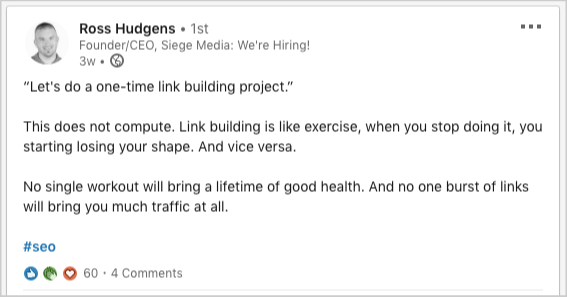by Venchito Tampon Jr | Last Updated on October 24, 2021
Someone handed you over a website to start a link building campaign. Unsure of what to do, you do a Google search for how to start link building.
A bunch of articles pop up and give you tips. Almost all of which say the same topic.
Different approaches. Different link building strategies. Now the question, where will you start?
In today’s article, I’ll share with you tips on what to do when a client comes if you’re working for an agency, or when you’ve just decided to build links for your new business site.
Table of Contents
Understanding Resource Allocation and Scope of Work
Link building is a piece of the pie in the entire business project. It isn’t a compartmentalized business activity.
Instead, it requires that you also look at other parts of SEO — technical side, for example, to gauge whether the client’s site is ready for some link building engagements.
Essentially, you don’t want to jump right in to link acquisition without the technical set up properly. It’s not a rule, but it helps you see more results and developments from your link building, if your foundation is solid.
What is your scope of work?
Entering into a new link building campaign, you have to know the extent of your work. Are you just working to build links to specific pages or you can get links to different pages of the site?
This is true for big brands that have solid content assets and are now hiring link builders or agencies to come up with efforts for content promotion.
The scope of work for most enterprise link building campaigns are geared towards specific pages they’re looking to rank for or have had positive secondary efforts on their conversions (mostly top of the funnel or middle-of-the-funnel driving pages).
If you have a very targeted link building campaign (either for 1 big content asset), you have the advantage of gaining and allocating your resources effectively.
One-time off project or long-term campaign?
As an agency that provides link building services to SEO agencies, we get clients looking for a one-time off project. It’s understandable they’ve had a tight budget, but it is more advantageous that they take a long-term mindset in link development.
Don’t just take my word, see how Ross Hudgens point this out.
What are your available resources?
Link building requires a team. If you think you can be a solo link builder for life, you can, but it would consume more resources than you’d have otherwise expected.
Depending on the size of your brand and your allocated marketing budget for search, you must have a good rundown of your resources. This includes your manpower — content writers, web designers/developers, outreach specialists/link prospectors — all are working together to attract and manually build links to pages.
If you’re a link building agency, you’d want to know if the brand has partnered up with other link dev agencies. You would want to get an idea of the types of links they’re focusing on and their targeted pages for links.
Starting with Content Inventory
When approaching a new link building campaign, it is vital to have a good content audit.
Not all new link building campaigns mean that there isn’t any content piece created in the past. It would have been a new project for you, but there are certain solid content pieces that have been published before.
Content audit of the site
So start looking for underpromoted content assets on your website, but has the potential to earn and gain new inbound links today. You can use Ahrefs to find pages that have gained a considerable amount of links (a few .edu links here and there), yet wasn’t pushed enough for more acquisition.
Reverse engineer competitors’ content
Knowing how your competitors generate content ideas and do outreach campaigns (even in this new normal season) can give you insights to forge your link development campaigns.
One, in particular, you have to look at is if they’ve gotten high-level domain links such as.edu links.
Using any link analysis tools like Ahrefs, you can quickly check if they’ve launched a specific program that attracts middle schooler pages or local colleges to link to them naturally.
The type of content and its unique value proposition matters how they’ve performed well in link acquisition.
Another insight to look at is the ability of the brand to get recurring links from the same domains. In Ahrefs, there is an option to filter and see domains with its different pages linking to the brand.
The discovery shows the perceivable value of the site or a specific content — turning it into a link bait authority site.
Discovering Targeted Link Building Tactics
New campaigns will unpack link building tactics suited for the brand, given its industry, available resources, and past histories of link dev campaigns.
This makes link building fun and exciting, as you’ll have to strategize a customized campaign for the website.
We’ve mentioned earlier deciphering the link strategies of competitors by looking at how they’ve gotten links in the past.
Another thing you have to consider is the range of domain level/authority of sites linking to them.
For example, in a tight niche, your competitors may only be getting links from DA10 to DA40 sites. Does that mean they’re low-level link builders? Of course not, the industry may only have a few niche blogs to reach out, but getting links from these content creators are likely to impact the site’s performance — given the topical relevance of those linking domains.
Having a good grasp of authority levels of linking websites will help you set a benchmark of domain levels for your new link building campaign.
idiosyncrasies of Tactics
When embarking on a new link dev campaign, here are certain unusual activities associated with common link building tactics we know of today.
A few examples are:
- Finding unlinked mentions when the brand is not a common word (unlinked brand mentions)
- Using branded email addresses for broken link building outreach (broken link building)
Elements that are only identified once you start a new campaign must be well documented to be able to turn them into a written process. This gives you the advantage of scaling small activities that could have a significant impact on your link building performance.
Suitable Content-driven Tips
When you have the bandwidth to try and test new content-driven techniques for your new campaign, don’t hesitate to do so.
For example, you can launch a data-driven campaign to attract any national or international press — debunking the myth that only big brands can execute this.
With an artistic approach to creation, adding visual graphic designs, and research-backed content combined with highly custom pitching to publishers, you can get initial results other older established competitors can be hard to replicate.
Focus On What Matters
You can be quick to implementing results right off the bat. It’s good to implement some processes you’ve managed to document for your past link building campaigns. But it is still better to customize campaigns for specific industries based on their context, objectives, and resources.
Knowing what truly matters for the brand helps in launching your new link building campaign.
The Author
Venchito Tampon Jr
Venchito Tampon is a Filipino Motivational Speaker, Corporate Trainer, and a Leadership Speaker in the Philippines. He is the CEO and Co-Founder of SharpRocket, a link building agency. With a decade of experience, Venchito has a proven track record of leading hundreds of successful SEO (link builidng) campaigns across competitive industries like finance, B2B, legal, and SaaS. His expert advice as a link building expert has been featured in renowned publications such as Semrush, Ahrefs, Huffington Post and Forbes. He is also an international SEO spoken and has delivered talks in SEO Zraz, Asia Pacific Affiliate Summit in Singapore, and Search Marketing Summit in Sydney, Australia. Check out his other businesses, Hills & Valleys Cafe, Blend N Sips and Saas Pursuit.
How our LINK BUILDING AGENCY builds 250 links/mo consistently using Predictable Link Building Methodology™…
- Using a SIMPLE and PROVEN system
- Using a SCALABLE strategy
- No private blog networks
- No creepy outreach emails



